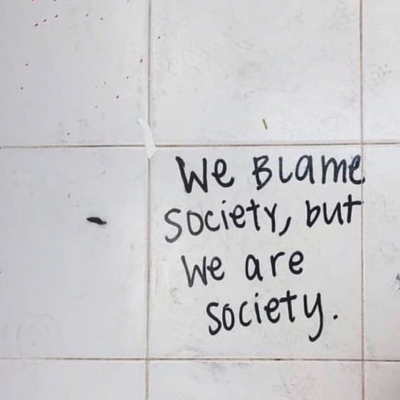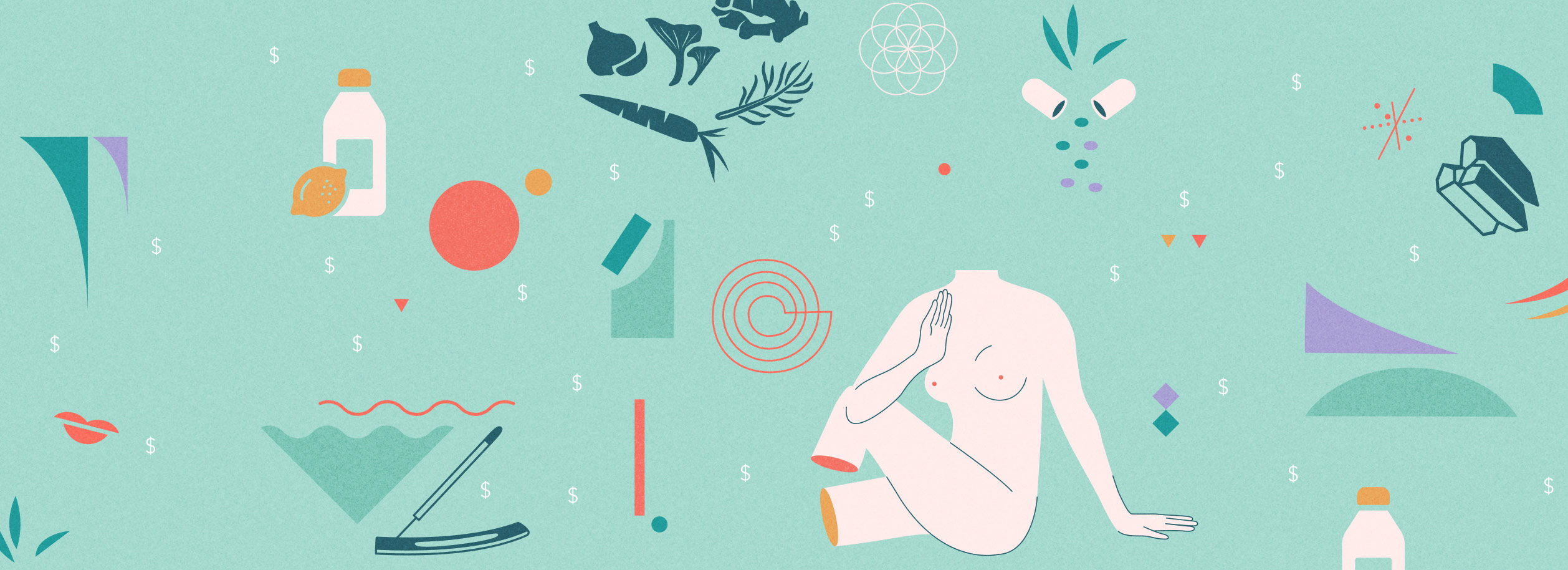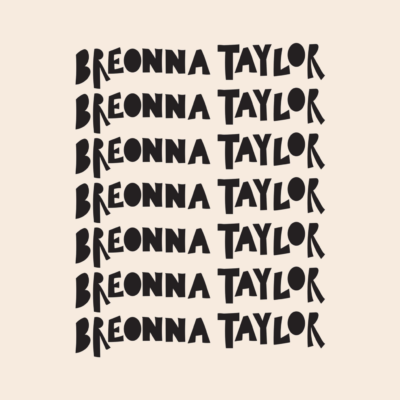
A couple of years ago, I had what I like to call a little 28-year-old crisis. I was living in LA at the time and on a mission to be the best version of myself. I attended moon circles, spiritual workshops, and went to more healers than I can count on two hands.
I was desperately seeking answers for clarity, for healing, and for connection with myself. I was searching for answers outside of myself to help me answer all of the messy and dark questions within myself.
All of these tools, especially moon circles, helped me feel more empowered. I started sharing my story to strangers. I felt understood and seen.
Over time, I started eating differently. If sharing makes me feel so good, then I’m sure green juice will make me feel good too.
I started dressing differently. If healers wear light colors to attract and call in white light, then I should too.
I started reading different books. If fiction won’t give me the inner peace I’m after, then spiritual self-help books will.
I was all in; using wellness as a tool to search for a connection with myself.
This search eventually led me into a pretty contrived relationship with my bathtub. Every spiritual and wellness influencer I followed on Instagram seemed to be participating in an elaborate nightly routine that included one thing: a luxurious bath.
I went to one of those bougie LA knick-knack-type stores (the type of store where you hand over your wallet and walk out with a $52 linen hand towel). I spent an hour excessively talking to the sales associate about the best bathtub products and their purported effects.
I felt ashamed. Like I had failed wellness and self-care somehow. Like I wasn’t able to do something all the cool kids so easily could.
Alexandra D’amour
I walked out of the store with a small paper bag filled with three products, totaling $271. It felt heavy when the sales associate rang me up, but I felt too embarrassed to back out of the sale, especially after she spent so much time answering my ridiculous questions. I reminded myself of the Instagram photos I saved on my phone and that the solution to my problem, the lack of connection with myself, was dangling in a brown paper bag next to me as I walked back to my car.
I wish I could say that was the start of a deeply personalized romantic relationship with my bathtub and therefore myself, but unfortunately it didn’t quite turn out that way. I thoroughly enjoyed my first bathtub experience, and I forced myself to continue drawing baths for a little while. But rather quickly, it started losing its effect. It felt time consuming and I couldn’t quite find the stillness within to experience what everyone else seemed to be experiencing. I felt restless most of the time. I stopped bathing, and returned to taking long showers, which had previously always made me feel calm and still.
I had purchased these products on my personal credit card so my husband wouldn’t find out. First red flag. He would have killed me. And to be honest, I kind of wanted to kill me too.
Alexandra D’amour
But the $271 was dangling over my head every time I walked into the bathroom and saw the products sitting on the tub’s edge, unused.
I felt ashamed. Like I had failed wellness and self-care somehow. Like I wasn’t able to do something all the cool kids so easily could.
I also felt guilty. I had purchased these products on my personal credit card so my husband wouldn’t find out. First red flag. He would have killed me. And to be honest, I kind of wanted to kill me too.
This guilt started to bleed into questioning wellness. I started asking myself: Why the fuck was I spending all of this money on wellness products?
It was the first time I questioned the things I spent money on in the name of wellness. Where else was I spending unnecessary money on myself?
I made a list of what I had already spent that week on my physical and mental health:
Several runs to Moon Juice. My favorite turmeric blend. A couple of $30 workout classes. Sun Potion Ashwagandha. A $120 acupuncture session. A $40 moon circle.
It was Thursday. The week wasn’t even over yet and I realized that seeking a connection with myself was costing a lot of money.
Did any of these products actually bring me closer to myself?
I wasn’t so sure. I started to examine the industry I had so loyally trusted. I realized very quickly that what I was buying wasn’t a deeper connection with self, but a lifestyle. Wellness had become a multi-billion dollar industry, one that strives for optimal health and further promotes solutions outside of ourselves as the answer, and I was just a target to sell to. A devoted follower eager to throw away my hard-earned money to “better” myself.
The lifestyle I was chasing was an unattainable one. One that seemed to encourage financial irresponsibility in the name of “wellness,” and one that brought me further away from myself. It made me live in the future and in comparison. It seemed there was always a new trend to follow, a new healer to listen to, a new product to buy, and a new pressure to conform to.
I never realized how incredibly exclusive this lifestyle was either. Every healer I had gone to, every woman at the moon circles I attended, every spiritual and wellness Instagram influencer I followed, all had one thing in common: they were white. If I closed my eyes and thought of the term wellness, I envisioned a white woman dressed in all white linen, burning sage, and spending a lot of money on products and services. To be well, it seemed you needed to be wealthy and white.
And it wasn’t even that simple. Not only was I buying into an exclusive lifestyle attained and portrayed by only wealthy white women, this ideal that I was striving for excluded women of color. Adhering to this “ideal” as a woman and as a consumer meant I wasn’t spending my resources or investing in women of other colors.
The lifestyle I was chasing was an unattainable one. One that seemed to encourage financial irresponsibility in the name of “wellness,” and one that brought me further away from myself. It made me live in the future and in comparison. It seemed there was always a new trend to follow, a new healer to listen to, a new product to buy, and a new pressure to conform to.
Alexandra D’amour
I also questioned language within the wellness space. I had purchased so many products that claimed to be organic, ethical, and/or clean. My bathroom was filled with brown jars that claimed to be leaders in clean beauty. I never questioned their ethics, morals, or statements. By analyzing the verbiage used within wellness brands, I noticed how many platforms state opinions like fact. How often were their articles actually pushing a product or a very expensive and exclusive service by using keywords that triggered an instant purchase on my end?
The messaging within the wellness industry is that I would feel better if I bought into the lifestyle. And the more I challenged my beliefs about the industry, the more I wasn’t so sure any of it was worth the price.
I started moving away from what wellness looked like on paper (i.e. on Instagram) and started asking myself what made me feel good. I started making decisions from there. Before I purchased a product or service, I asked myself the reason I was interested in it. Where did I find out about it? Would I be able to obtain the same results without spending money?
I still spend some money on wellness. I go to therapy weekly, and acupuncture bi-weekly. But I’m no longer adhering to a prescribed kind of life. I am making the rules for myself by myself. Rather than spending exorbitant money on products, I focus on the things I know bring me inner peace:
Journaling. Setting boundaries and saying no. Forgiving. Establishing a dialogue with my younger self. Letting go of toxic people. Trying to be present in my body.
These were some of the things that brought me closer to myself. And all of these things required no (or very little) money.
The messaging within the wellness industry is that I would feel better if I bought into the lifestyle. And the more I challenged my beliefs about the industry, the more I wasn’t so sure any of it was worth the price.
Alexandra D’amour
Over time, I unfollowed a bunch of spiritual and wellness influencers, and sought inspiration from my surroundings and my friends.
A particular friend of mine eats dinner in her bathtub every night while watching The Office. When I went to visit her recently, she wanted to draw me a bath after I had told her about my recent stresses. Skeptical, but touched, I agreed. While she was attempting to create some bubbles with her hand soap she asked, “Isn’t this heaven on Earth?” She placed her laptop on the toilet, handed me a glass of wine, and dropped off a bag of tortilla chips with Trader Joe’s salsa. It didn’t cost $271 and it sure as hell did not look like those fancy Instagram photos, but my friend was right—it was heaven.
It soothed me in the same way that stepping away from what wellness was supposed to look like did. It turns out all I needed to feel connected to myself was to go within. No products needed.
illustration by Nick Pons






THIS. As someone who works in the wellness industry (because it IS an industry), this article truly resonated with me. Lovely, insightful, and brave. Thanks, girl. 🙂
Yes!! I love this. When did wellness get tangled with consumerism, and when did that mask become so hard to recognize? I had a similar conversation with my dad recently, his advice? Wellness/spirituality/health starts exactly like you said, with self….and with a whole lot of compassion. I am always in love with your work. Keep going <3